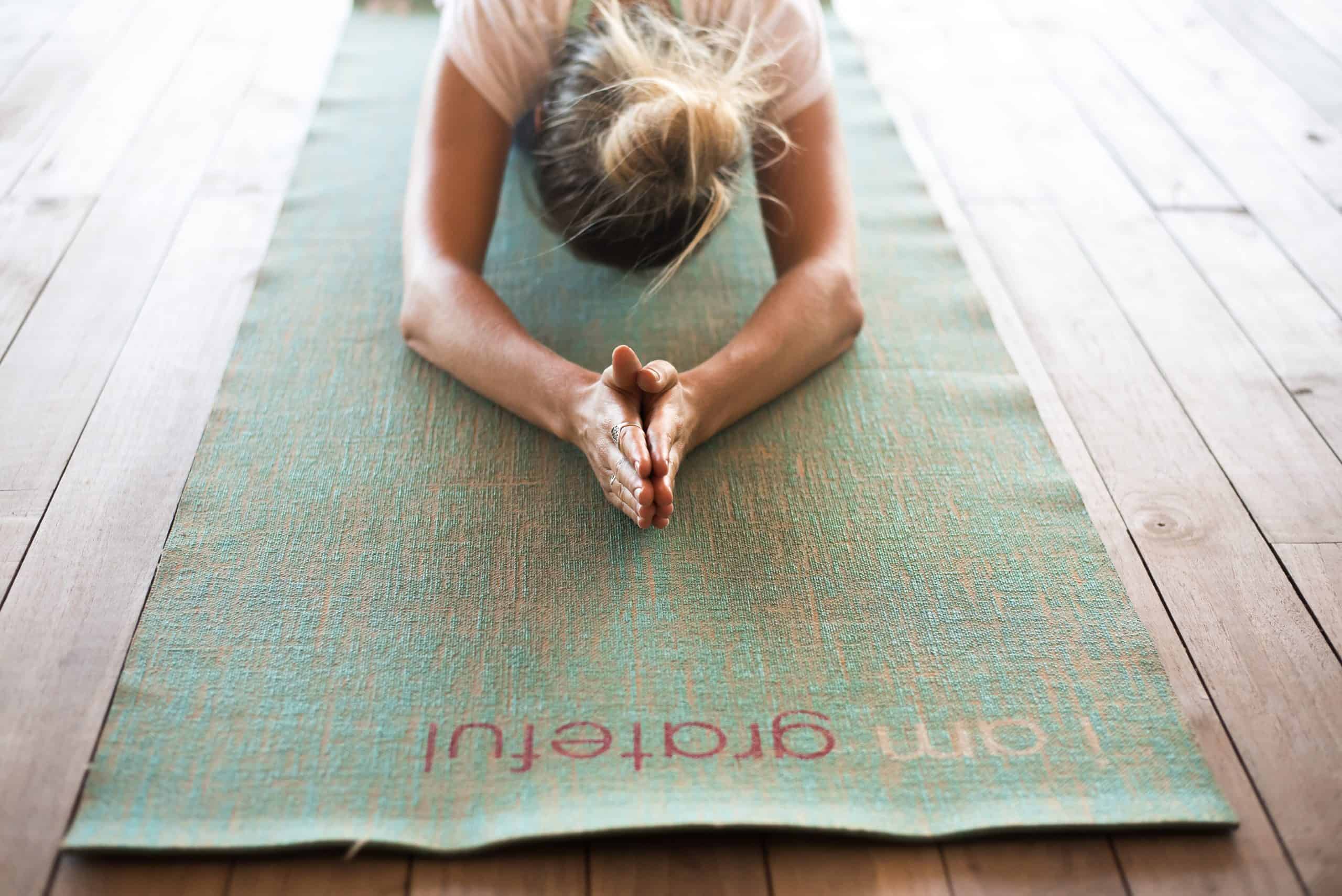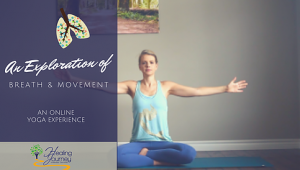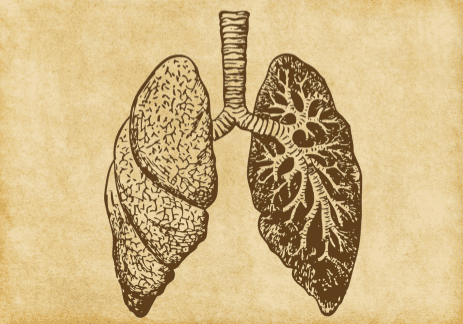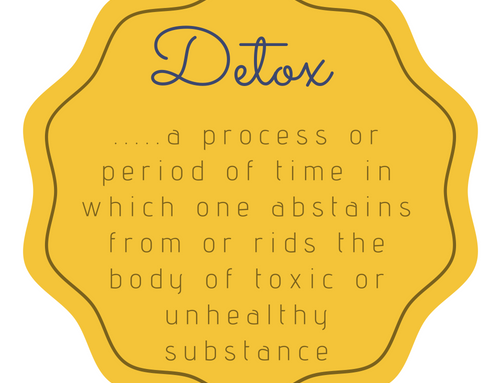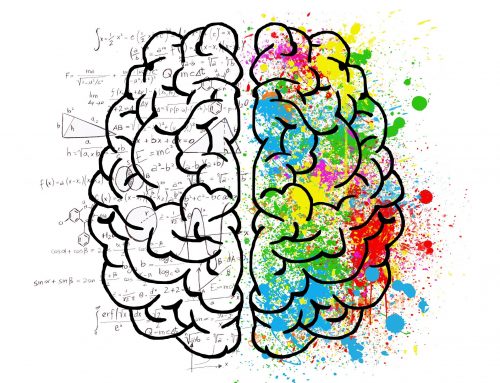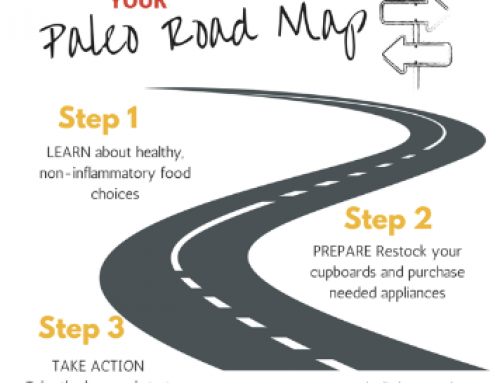Just Breathe
My hands stretched out in from of me as my forehead rested gently on the mat, with my gluts on my heels as I lie in child’s pose. The gentle, warm hands of my yoga teacher placed on my kidneys somehow gave me the permission I needed to surrender it all to my yoga mat. With every exhale, my body released sorrow – sorrow that my body had quite possibly held onto for years.
Slowly, over the month long teacher training, I learned to breathe into those places of tension, pain and sorrow. I learned the art of letting go through breath. My yoga practice became like a dance between my breath and my body, as my movements floated in the spaces created by my inhales and my exhales. I learned to notice the pauses between my breath and to sit in the space of silence and stillness, if even for a moment. And I learned to breath into parts of my body that had been ignored for years.
About Breathing
Our breath both begins and ends life. It is both autonomic and voluntary. It has an amazing ability to heal both our bodies and our minds, the power of which science has only recently confirmed. On average, we take over 20,000 breaths per day. The over 480 million alveoli cells, or air sacs that line our lungs are involved in the gas exchange between our lungs and our blood. They provide our bodies with life giving oxygen and allow for the waste removal of carbon dioxide. Energy giving as well as releasing and cleansing, the breath provides a powerful rhythm of sustenance and growth.
When we inhale, air flows into our nose/mouth, through our throat and into our chest. Our ribcage starts to expand, lifting up and thereby creating a small arch in the spine. The diagphragm extends down, which causes our abdominal region to expand outwards, like a buddha belly. Inhales make space for our internal organs. They can provide clarity, strength and revitalization. When we exhale, our belly draws into towards our spin, our diaphragm moves up, our ribcage lows back down and our spin returns to neutral, with the breath exiting through our throat and out our nose/mouth. Exhales are cleansing, relaxing and releasing.
Healing Breath
In yoga, breathing is known as pranayama. According to the ancient text of Patanjali’s Sutras which provides a basis for modern-day yoga (from around 200B.C), breath is one of the Eight Limbs of Yoga. In Sanskrit, prana means life-force. As such, breath represents the eb and flow of the life force that is constantly moving within us. There are many different types of pranayama – some intended to stimulate and others intended to relax.
It seems that ancient traditions were on to the importance of breath well before modern day society realized it’s role in mental wellbeing and health. Deep breathing allows for expanded lungs, which increases the amount of surface area in your lungs that can come intact with oxygen. Deep breathing has been associated with multiple health improvements. Not surprisingly, studies have shown that our lung capacity is a known predictor of health, with lung capacity often decreasing with age. A decreased lung capacity means that our body needs to work overtime in order to get the needed oxygen to different parts of the body. Deep breathing increases increases our lung capacity by allowing our lungs to expand, exposing more surface area to the incoming oxygen.
The reciprocal relationship between breath and emotion has been well defined; emotions influence breathing and breath influences emotions. Negative and positive emotions both influence the speed of our breath. Think about it – when you are angry or excited – what happens to your breath? We tend to breath quickly and deeply and it is difficult to exhale. In sadness and/or withdrawal, we tend not to inhale very deeply, and yet we breath slowly, and when we are scared we often inhale quickly and quite shallow (think panic attack). And when we are relaxed – you guessed it, we breath slowly and deeply.
And the reverse is also true. Changing our breathing rate can impact our emotional state. That is why the trend of so many mental health approaches is to incorporate some form of mindfulness, meditation or breathing into relaxation strategies. Well known approaches include Mindfulness Based Stress Reduction programs (MSBR), or mindfulness-based Cognitive Therapy (MBCT).
Our breathing connects with our vagal nerve, one of the longest cranial nerves in our body. The role of the vagal nerve is to connect the brainstem to the body, and is the main driving force of the parasympathetic system. This system is response for activating relaxation through deep breathing, decreasing inflammation, lowering blood pressure and heart rate, and reducing anxiety. In today’s world where stress dominates, the parasympathetic system’s rest and digest function is often overridden by the sympathetic system’s fight or flight response. Despite the fact that there aren’t any angry lions out to kill us – work deadlines, financial issues, emotional stress and being stuck in traffic are just a few of the many examples of stress that keeps our sympathetic system running in full force. That’s why learning to calm our mind and body through deep breathing is more important than ever. In fact, it’s a key element of health, because it is in this state where our body can truly heal.
There have been many documented benefits associated with breath. Slow deep breathing has been shown to decrease heart rate and blood pressure and improve oxygen saturation (oxygen usage). Ujjayi breath, a specific type of breathing used in some forms of yoga has also been demonstrated to improve oxygen saturation. Research has shown that deep breathing can balance the nervous system by increasing parasympathetic activation, reduce stress associated with going to the dentist, improve the management aggression males, and improve the emotional state in individuals with PTSD. Deep breathing has also been shown to increase theta waves, which are brain wavelengths that are quite slow (between 4-7 cycles per second) and represent a state of deep relaxation.
Breath Through Yoga
The health benefits of yoga in a variety of different illnesses are just beginning to be documented by the scientific community.
Here are some research outcomes:
- Yoga reduced psychological distress and PTSD symptoms in victims of the 2004 Tsunami
- Yoga-based interventions improved sleep and daytime functioning in veterans with PTSD.
- Adolescents with irritable bowel syndrome who participated in yoga demonstrated a reduction in gastrointestinal symptoms and less avoidance of emotions
- Individuals who experienced mild levels of depression showed an improvement of mood compared to controls
- Individuals with mental health issues demonstrated improved emotional outcomes and decreased salivary cortisol levels
- Gentle haha yoga showed reduced symptoms related to fibromyalgia.
- Yoga has also been demonstrated to be effective in treating anxiety, with a 41% remission rate.
Typically, the style of yoga incorporated into many of the studies has a large focus on breath.
The benefits of breath, an act that has become so second nature that we almost take it for granted, are incredible. Breath holds within it the key to our healing. It has the power to transform both our minds and our bodies. So whether you spend a few minutes a day in meditation, or take the time to regularly practice yoga, I highly recommend you start developing intimacy with your breath.
To go deeper into your yoga practice and obtain your teacher qualifications, click here.

